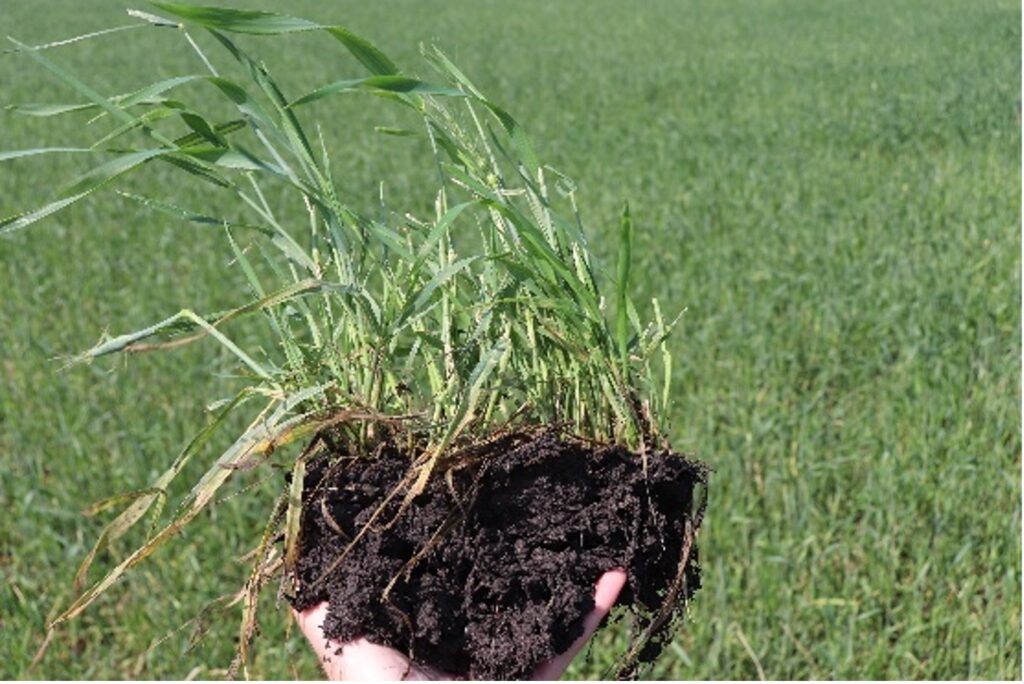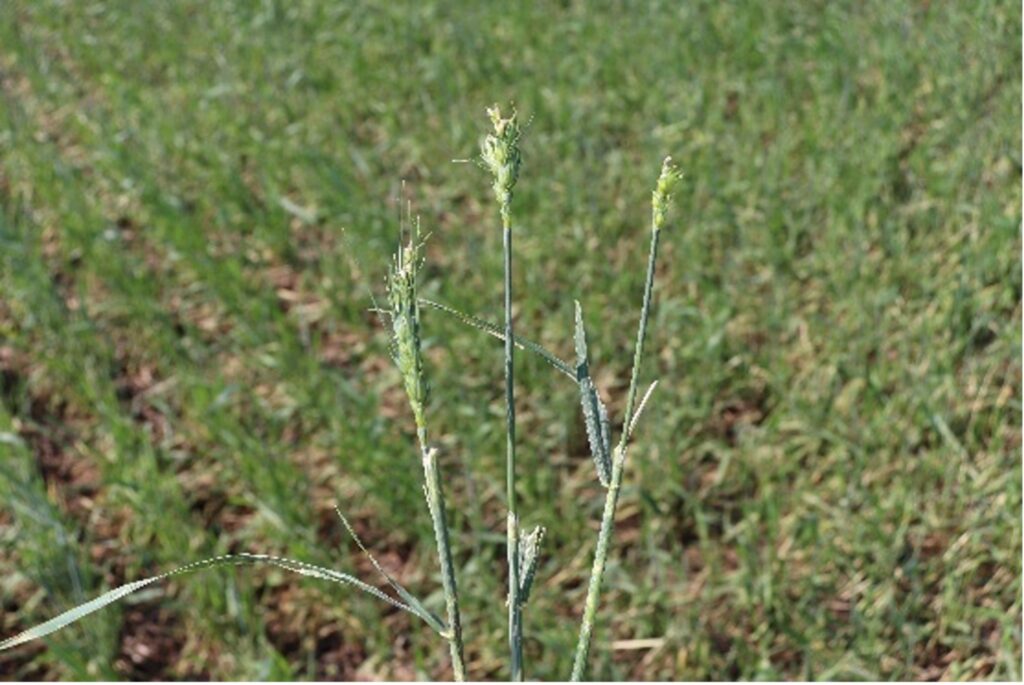Section Title
Evaluating hail damage in wheat
- Wheat
Manitoba growers know the devastating impacts of hail on wheat due to unstable spring and summer weather. Assessing hail damage can be very difficult, but there are steps you can take after hail events to evaluate crop damage.
Figure 1. Hail damage to wheat.
Things to keep in mind
- Take note of how long the hail lasted, hail size and the affected area size. These variables impact the extent of crop damage.
- Note the crop growth stage. The plant growth stage at the time of the hail event strongly influences the plants’ ability to recover and gives an indication of potential yield reductions.
- Give the crop three to five days after the hail event, as this allows plants to recover and produce new leaves. Waiting a few days will provide a more accurate picture of crop damage.
- Call your crop insurance adjuster, if you have coverage.
- Crops that have experienced hail damage can be more susceptible to disease. Therefore, keep a vigilant eye on disease development and forecasts.
- Hail damage can vary and is also very challenging to replicate in small plot trials. Therefore, at this point, there is no reliable research indicating economic value of post-hail damage applied products (Dhillion et al. 2021).
Wheat growth stage at the time of the hail event and the severity of the hail event significantly impact the plants’ ability to recover. Therefore, understanding the impact of hail on yield by growth stage is necessary when evaluating fields after a hailstorm. Cereal growth stage descriptions can be found here. It should be noted that weather conditions following a hail event also influence plant recovery.
Early (prior to stem elongation)
Wheat damaged at an early growth stage has the best potential to recover and produce yields similar to undamaged crops. Improved crop recovery at this growth stage could be because the growing point is below the soil surface and there is ample time in the growing season for recovery1. In a 2016-18 study, Alberta researchers found no significant yield differences between the control plots (no simulated hail) and the light and heavy simulated hail treatments when damage occurred at tillering (Dhillion et al. 2021). During and after stem elongation (GS 30) the degree of crop injury and recovery potential becomes more difficult to determine. In some cases, heads can still pollinate, and regrowth can occur.
Mid (flag leaf emergence to swollen boot)
Wheat yields are reduced due to hail events as the growing season continues. Research from the northern U.S. suggests that hail damage at the boot stage can cause yield reductions between 28-39 per cent2. Crop injury due to hail in this study was simulated by stem breakage, therefore leaf injury was not accounted for. Research from Alberta between 2016 and 2018 found yield reductions of 20 – 30 per cent when simulated hail occurred at flag leaf timing (Dhillion et al. 2021). The research project from Alberta accounts for leaf injury. This study also found that hail events at this stage, regardless of the severity, reduced plant biomass (Dhillion et al. 2021).
Late (flowering to maturity)
Hail events are most damaging when wheat is between the flowering to milk stage. This is supported by research from across the Prairies, including the University of Wisconsin, North Dakota State University and Farming Smarter from Alberta. Research from Alberta demonstrated a yield loss of 42 – 55 per cent when hail occurred at flowering (Dhillion et al. 2021). Similarly, research from the U.S. indicates yield reductions of up to 70 per cent at the milk stage due to hail2. Research from Kansas State University has also found yield reductions in winter wheat due to hail damage when damage occurred between the soft dough and mature crop stage5.
Additional Information
Barley tends to recover better from hail damage compared to wheat, especially if damage occurs before the boot stage. Typically, barley crops hailed prior to the boot stage should be left if stems or green tissue remain3.
References
- Dhillion GS, Gretzinger M, Baarda L, Lange R, Gill KS, Yaremko V, Harding MW, Coles, K.2021. Effect of simulated hail damage and foliar-applied recovery treatments on growth and grain yield of wheat, field pea, and dry bean crops. Canadian Journal of Plant Science. 101(5):758-769. https://doi.org/10.1139/cjps-2020-0231
- Hail Damage in Small Grain by Joe Lauer, University of Wisconsin, 2007 derived from Busch 1975.
- Busch R.H, Salveson F.E.1972. Simulating Hail Damage to Spring Wheat. Farm Research 29(5): 3-7.pdf (ndsu.edu)
- Manitoba Agriculture’s Crop Talk Webinar, June 19th, 2024. CropTalk June 19 (youtube.com)
- Lollato R, Jaenisch BR, Maeoka R. 2017. Timing and Positioning of Simulated Hail Damage Effects on Wheat Yield in Kansas. Kansas Agricultural Experiment Station Research Reports. 3(6): 1-7. https://doi.org/10.4148/2378-5977.7452













